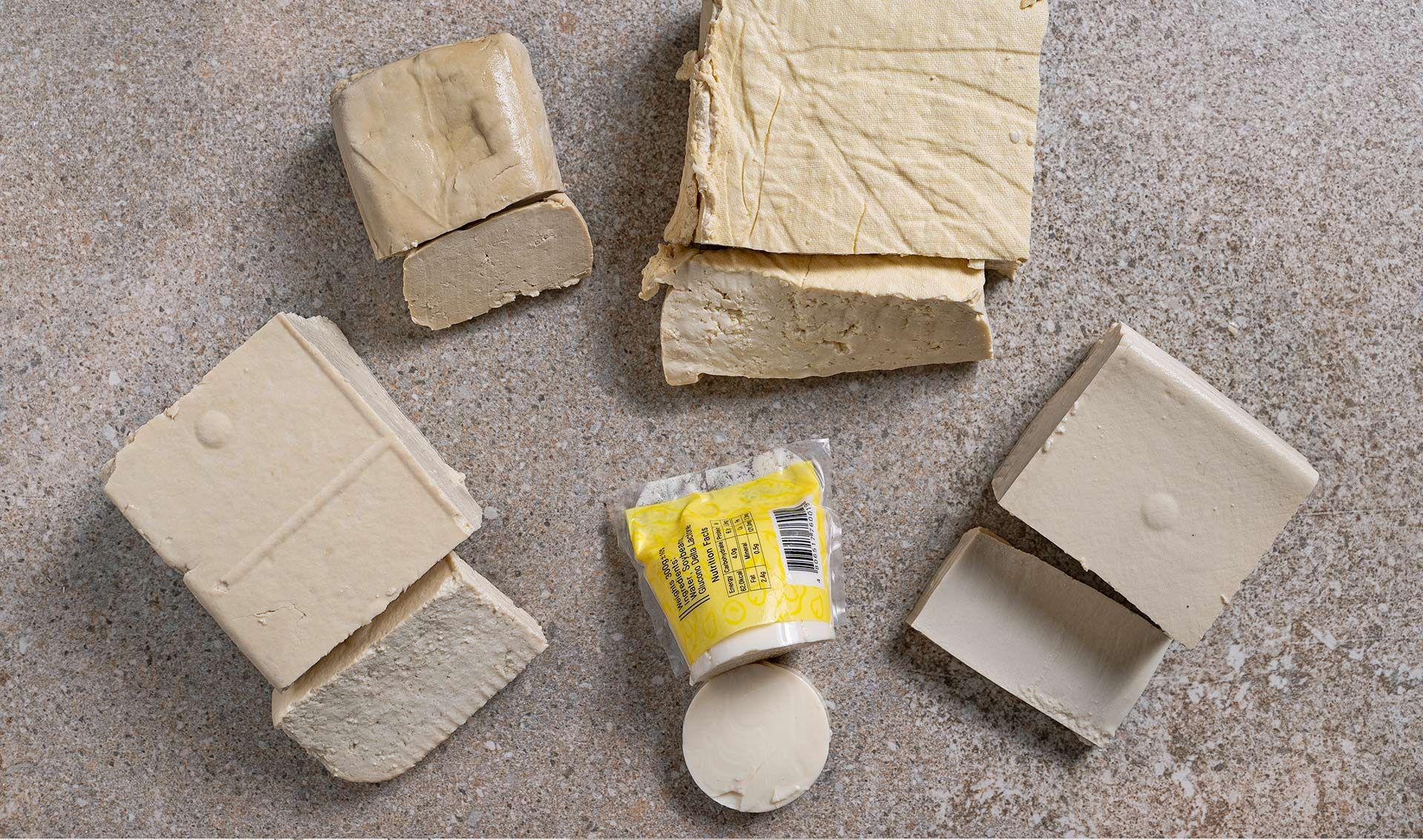So you’ve decided to make a tofu recipe. Now you’re in the supermarket staring at over three types of tofu, not knowing which one to pick. What's the difference between tofu and tokwa? Isn't soft and silken the same thing? Why does that tofu come in a tube?
Tofu comes in all shapes, textures, and density. In Asian countries like China, Japan, and Taiwan that cook with a lot of tofu, the available textures are soft, medium, firm, and extra-firm tofu.
In the Philippines, the tofu selection is more narrow. Of course, there's always our local tokwa. In Metro Manila, you'll also run into firm tofu, egg tofu, soft tofu, and silken tofu. This guide breaks down each one so you know which one to get for different recipes.
Tokwa
Tokwa is the Filipino term for tofu. It typically comes in block form, has a thicker "skin," and holds less moisture than firm tofu, making it a close equivalent of extra-firm tofu. It tastes slightly tangy.
You’ll find tokwa used in most Filipino tofu dishes such as tokwa’t baboy, tofu sisig, and adobong tokwa. Thanks to its firmness, tokwa can hold its shape in stir-fries. Its low moisture content makes it great for frying, too. You can tokwa in recipes that call for firm or extra-firm tofu.
Firm Tofu
Firm tofu is—as the name suggests—firm. That means it holds its shape very well during cooking; it doesn’t break too easily. It also absorbs flavor very well, given that you season or marinate it as you would meat. When cooked, firm tofu has an almost rubbery texture that precedes a soft center.
If you’re making savory recipes and you’re not sure what type of tofu to buy, firm tofu is the safest choice because of its versatility. It won't fall apart easily, so you can pan-fry, bake, grill, deep-fry firm tofu. It's also great to crumble into smaller pieces for tofu scramble, or as a meat-free substitute for ricotta or feta cheese.
Egg Tofu
Egg tofu, also called "scallop tofu" because of its appearance when sliced, sits between firm and soft tofu in texture. Made with eggs, it’s a bit more stable yet still creamy and delicate. You can pan-fry it, as long as you don't mess with it too much—it can't handle rough stirring well. It’s best to use silicone utensils to avoid tearing it.
Egg tofu is sold in plastic tubes. To use it, slice through the packaging where indicated, then squeeze out the tofu. From there, cut it into disks for cooking.
Silken Tofu
Silken tofu is an unpressed and undrained type of tofu—basically coagulated soy milk. It has an extremely soft, custard-like texture that you can scoop up or slice smoothly.
Silken tofu can come in three consistencies: soft, firm, or extra firm, depending on the amount of soy protein it contains. For general use, you can interchange it—at least the extra firm kind—with soft tofu.
Silken tofu's delicate flavor makes it a great canvas for flavor. You can simmer it in hotpot and soups (like in Korean spicy tofu soup), or eat it chilled with a sauce or dressing. You can add it to sweet stuff like smoothies and desserts, as well as blended food.
